Saving time and money in the kitchen is possible with just a few smart strategies and practical tweaks. Food waste, overspending, and meal fatigue can all be avoided by adopting clever habits and tools. With a little planning and creativity, every home cook can enjoy delicious, budget-friendly meals while minimizing daily stress and effort. Discover these proven food hacks to streamline shopping, storage, and cooking for a simpler, more affordable routine.
1. Meal Prep Like a Pro

Meal prepping is a cornerstone of efficient, budget-friendly cooking. By dedicating a few hours each week to batch-cooking grains, proteins, and vegetables, you’ll always have the building blocks for quick, healthy meals. After that, portion out lunches and dinners into reusable containers, label them with the date, and finally, store them in the fridge or freezer for easy access throughout the week.
This reduces impulse spending on takeout and minimizes wasted groceries. For example, cooked chicken breast can become salads, wraps, or stir-fries all week long. Nutritionists recommend meal prepping as an effective way to maintain a balanced diet and save both time and money.
2. Harness the Power of the Slow Cooker
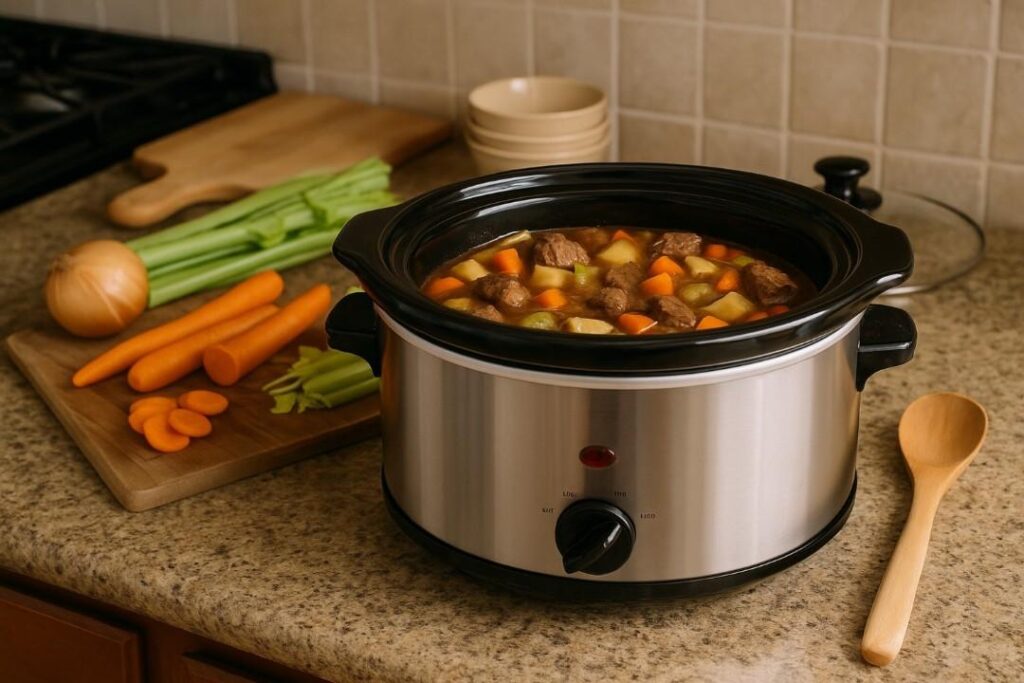
Slow cookers and electric pressure cookers (like the Instant Pot) transform simple, inexpensive ingredients into flavorful, satisfying meals with minimal effort. For instance, you can simply add ingredients in the morning, set the timer, and then come home to a hot dinner.
Slow cooking is perfect for tenderizing cheaper cuts of meat, making hearty stews, or cooking big batches of beans and grains. This method not only saves money but also time, as cleanup is often easier with one-pot recipes. For busy families or anyone with a hectic schedule, the slow cooker is a lifesaver.
3. Freeze Fresh Produce Before It Spoils
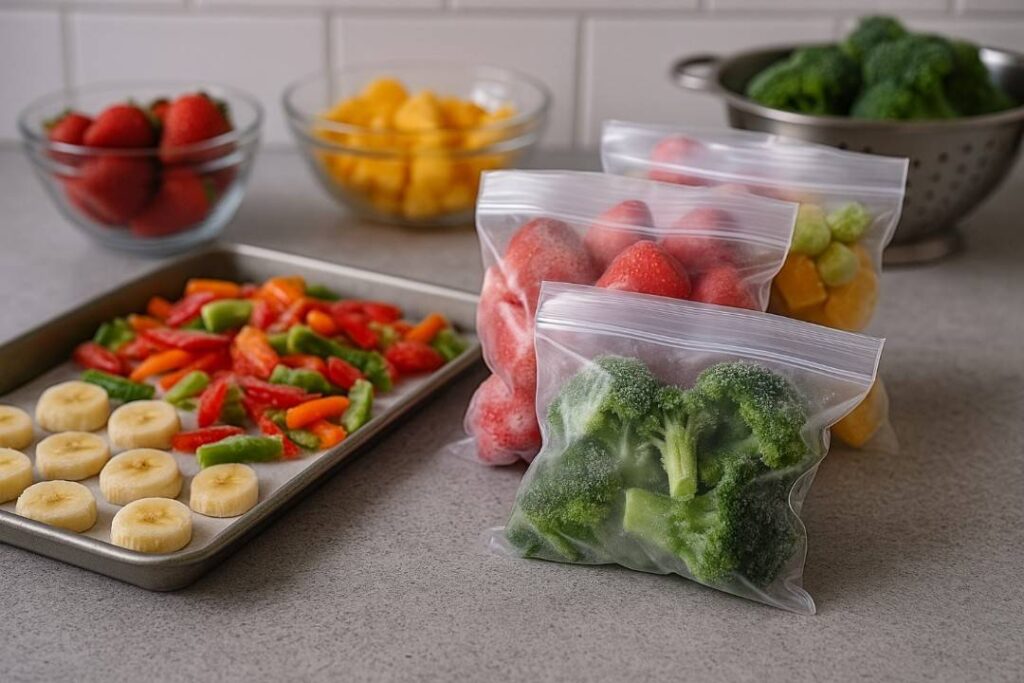
Fresh fruits and vegetables often spoil before they’re fully used. Instead of tossing them, chop and freeze produce to use in smoothies, soups, or stir-fries later. Freezing locks in nutrients and prevents waste, letting you buy in bulk when prices are low.
For best results, spread chopped produce on a baking sheet to freeze individually, then transfer to bags for easy portioning. Even herbs can be frozen in olive oil for later use in sautés. Mastering freezing techniques helps stretch your grocery budget and ensures you always have healthy ingredients on hand. Find freezing tips from the USDA.
4. Make Your Own Broth
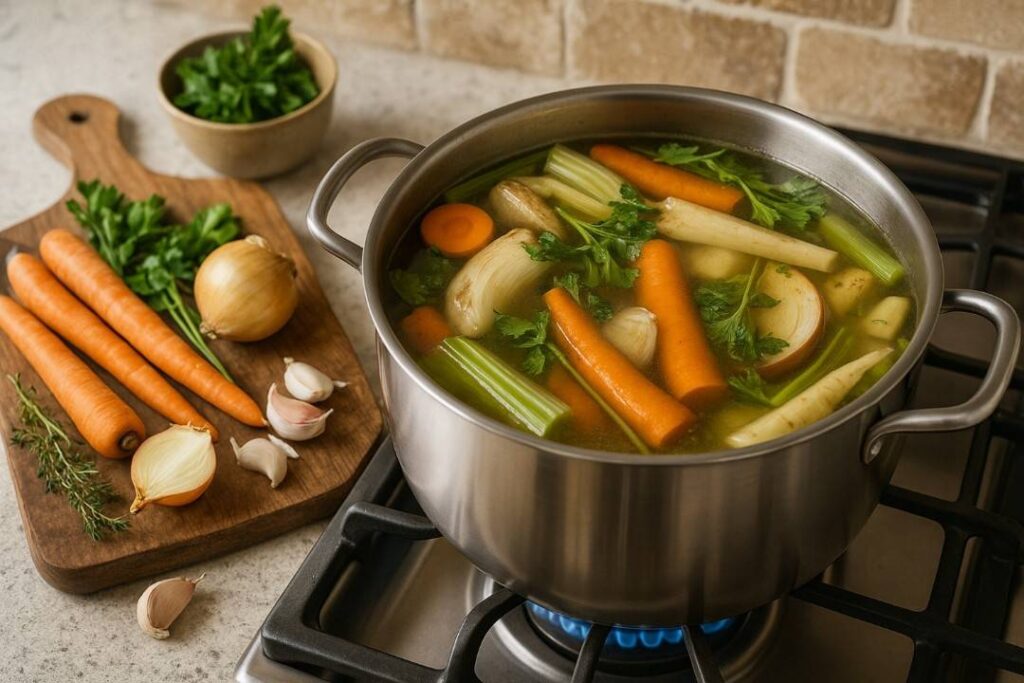
Homemade broth is a fantastic way to use up vegetable trimmings and bones while avoiding the cost and preservatives of store-bought versions. Save onion skins, carrot ends, celery leaves, and bones in a freezer bag, then simmer with water and herbs for a rich, flavorful broth.
Broth can be used as a base for soups, risottos, and sauces, adding depth to any dish. Freeze extra portions in ice cube trays for easy use later. This hack is eco-friendly, economical, and enhances your meals. Check out this broth guide from The New York Times Cooking.
5. Keep Herbs Fresher, Longer
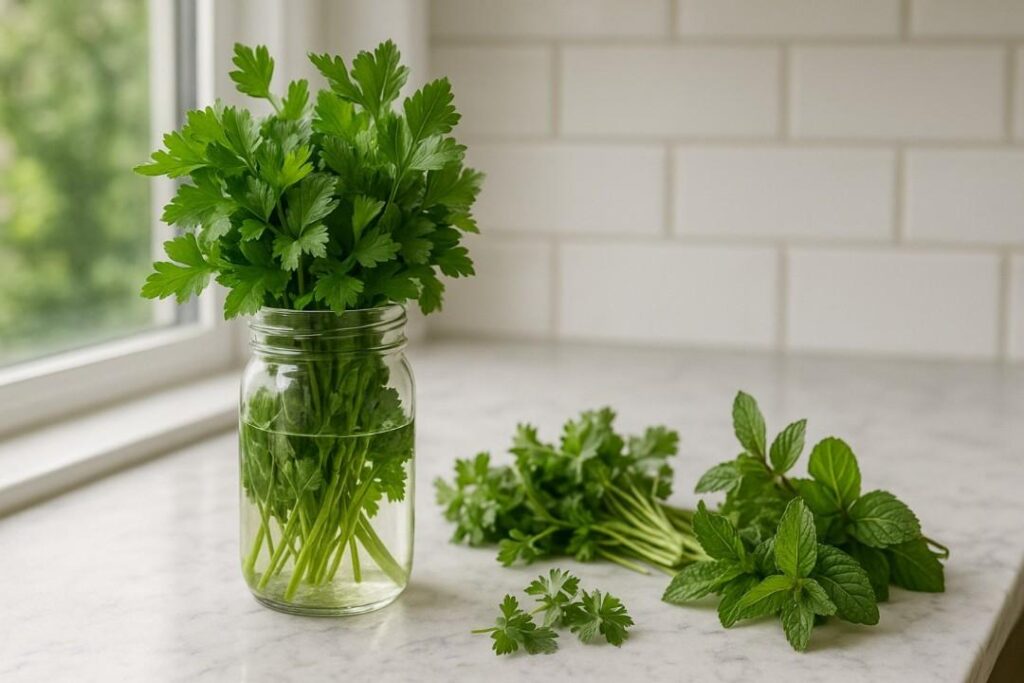
Fresh herbs can quickly wilt in the fridge, resulting in waste. Extend their shelf life by treating them like cut flowers: trim the stems, place them in a glass of water, and cover loosely with a plastic bag before refrigerating.
This technique can help maintain the freshness of herbs for as long as two weeks. Alternatively, chop and freeze herbs in olive oil using an ice cube tray for easy meal add-ins. These simple tricks save money and ensure you always have fresh flavor at your fingertips.
6. Transform Leftovers Into New Meals
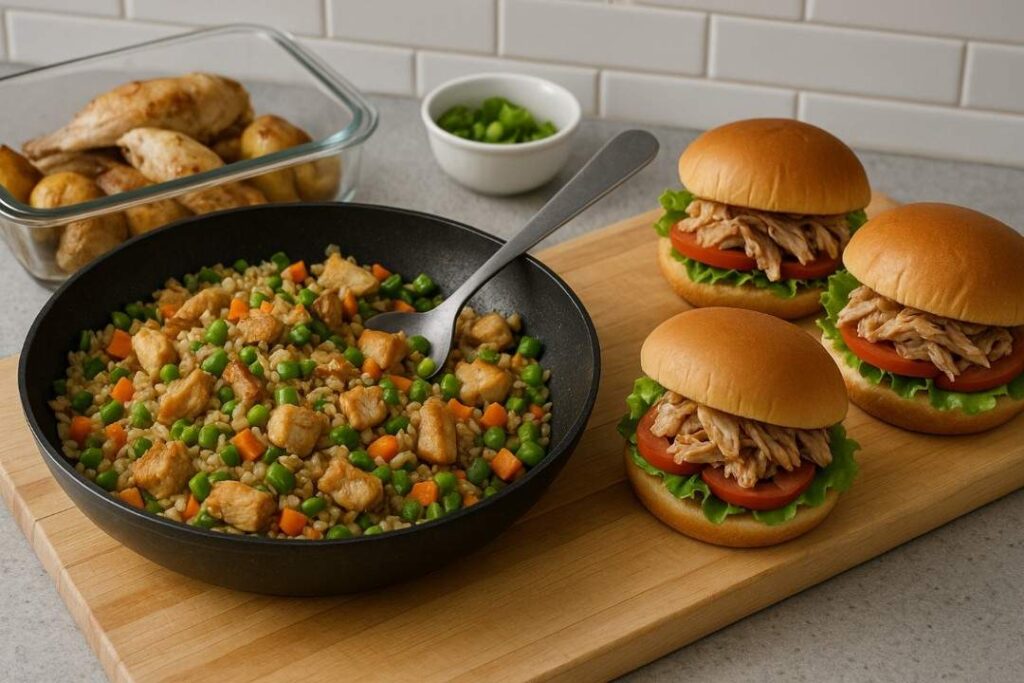
Get creative with leftovers to prevent food waste and keep meals interesting. For example, last night’s roast chicken can become chicken salad sandwiches or added to fried rice, while leftover vegetables can be blended into soups or omelets. Repurposing food not only saves money but also challenges you to try new flavor combinations. This habit can become second nature once you start thinking of leftovers as versatile ingredients, not just reheated meals. Explore leftover recipes from BBC Good Food.
7. Shop in Bulk and Store Properly
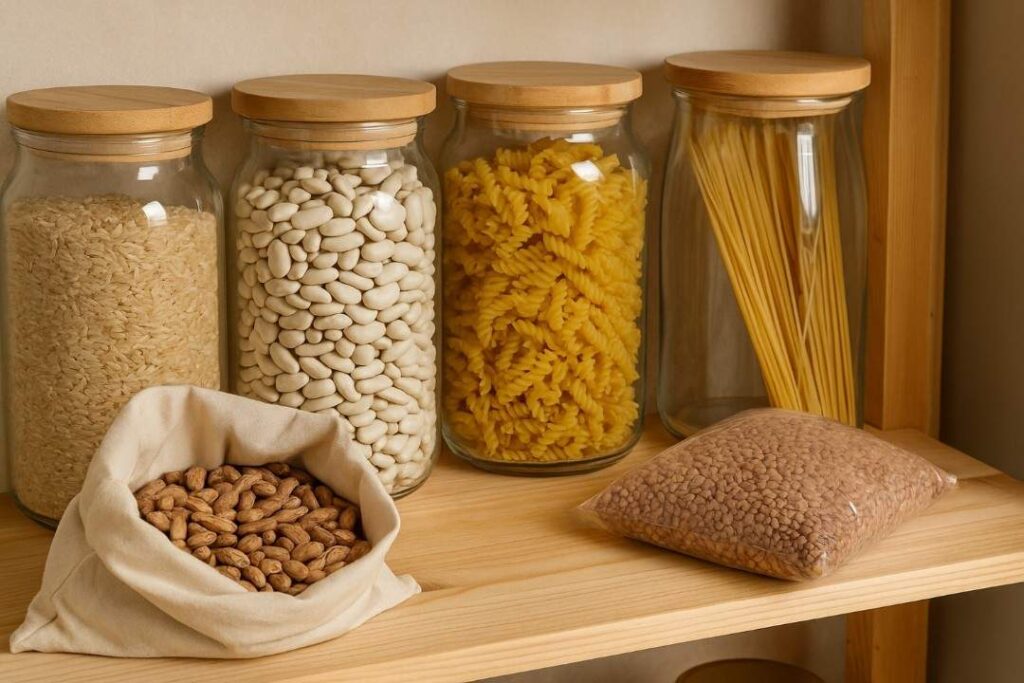
Bulk shopping for pantry staples—like beans, rice, pasta, and oats—often lowers your per-unit cost. However, the key is to only buy what you can use before it goes stale. Store bulk items in airtight containers to protect against pests and moisture, and label each container with the purchase date. Bulk shopping also reduces packaging waste and cuts down on frequent trips to the store. This approach works especially well for families or meal preppers who use staples regularly.
8. Take Advantage of Grocery Store Apps

Modern grocery store apps offer digital coupons, price comparisons, and personalized deals, helping you save money with every trip. For example, many apps track your purchases and suggest discounts on items you buy frequently. In addition, some even allow you to scan your receipt for cashback rewards. As a result, using these tools can shave significant dollars off your monthly food budget with very little effort.
9. Regrow Vegetables From Kitchen Scraps
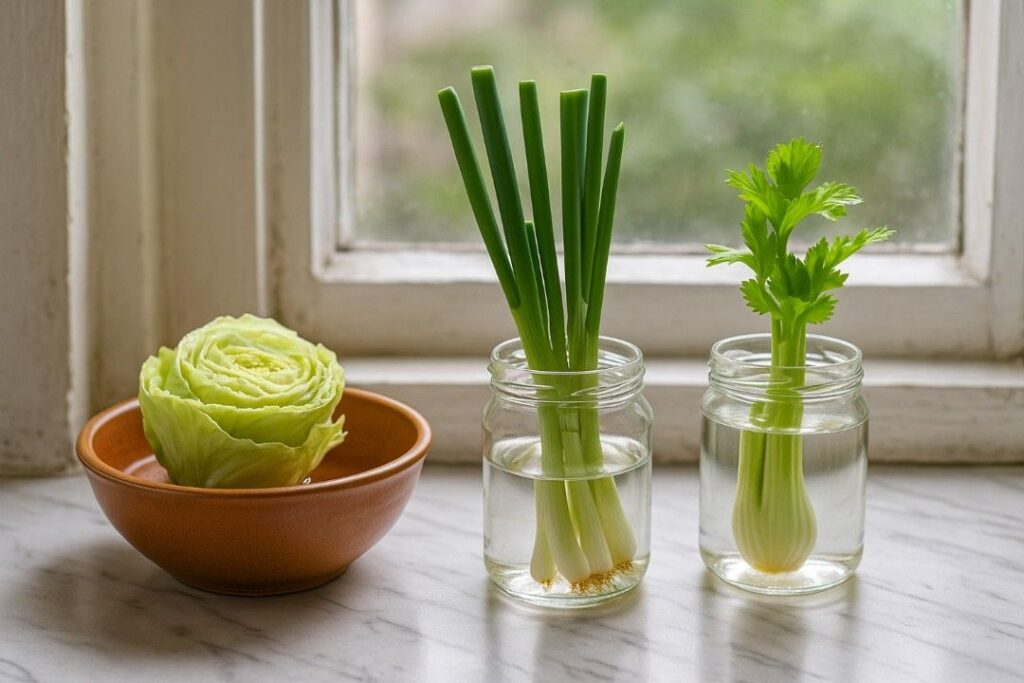
Certain vegetables can be regrown from scraps, providing a constant supply of fresh produce at minimal cost. For example, place the root end of green onions, leeks, or celery in a glass of water, and watch them regrow in days. Lettuce and herbs can also be revived using this method. Once roots develop, transplant into soil for a steady supply. This hack is eco-friendly, fun for families, and a great way to stretch your grocery budget.
10. Make Salad Dressings at Home
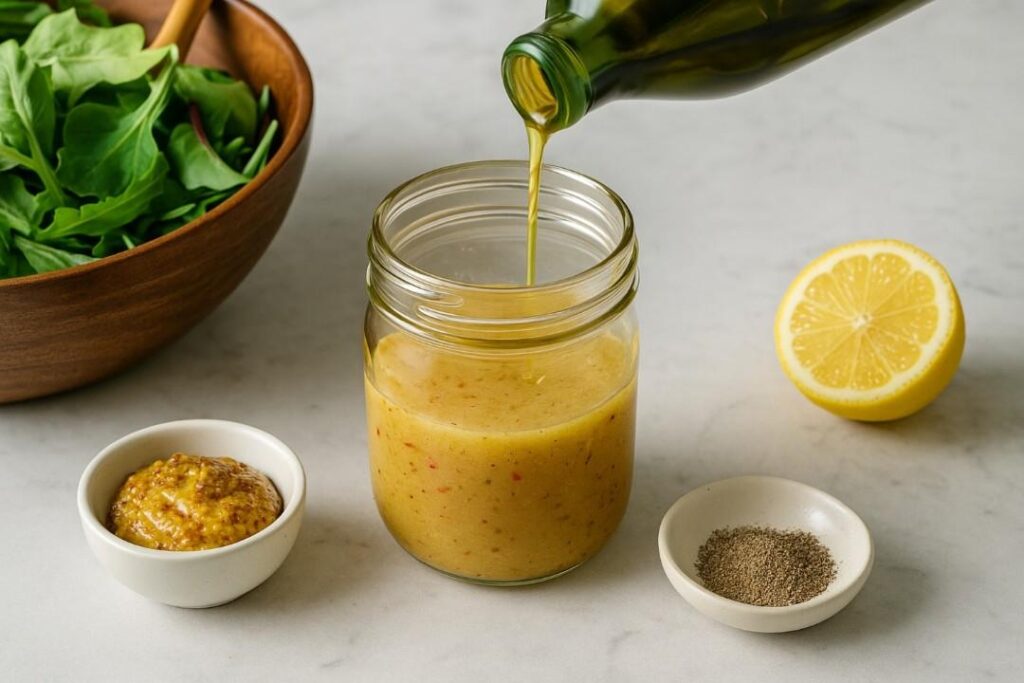
Skip pricey bottled dressings by making your own with pantry basics like olive oil, vinegar, mustard, and herbs.In comparison, homemade dressings are healthier—lower in sugar and sodium—and, moreover, can be tailored to your taste. Whisk up a big batch and store in the fridge for a week of quick salads or marinades. Not only will you save money, but you’ll also avoid preservatives and unnecessary additives. Find delicious recipes from BBC Good Food.
11. Label and Date Everything
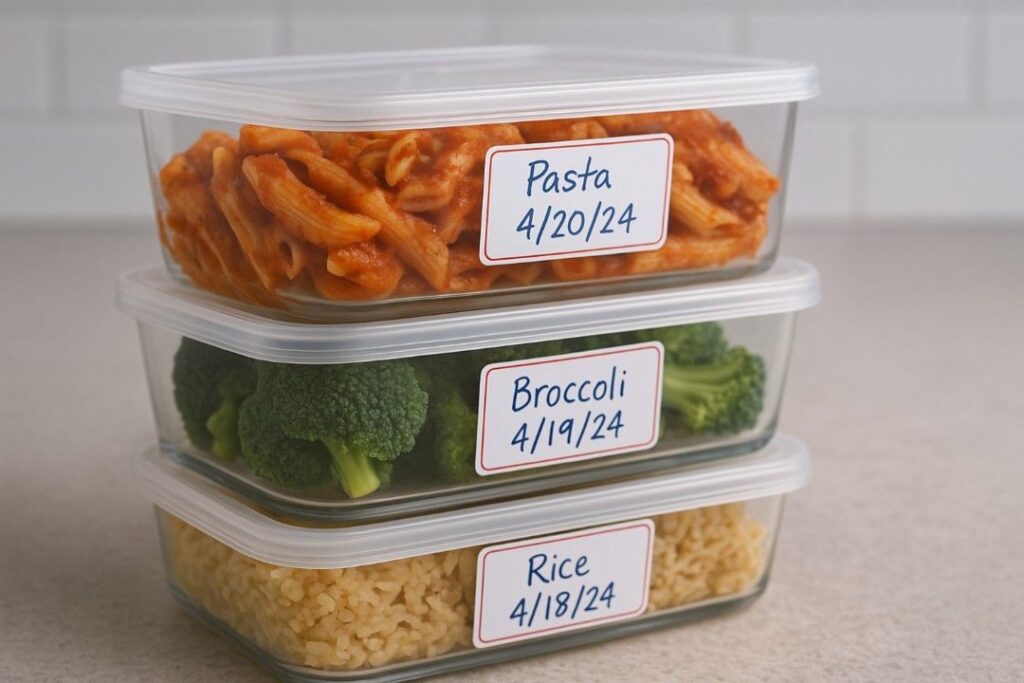
Labeling and dating leftovers, meal prep containers, and pantry items help prevent food waste and accidental spoilage. Use removable labels or masking tape with a marker for easy identification. Organized labeling makes it easier to rotate food, spot expiring items, and avoid unnecessary purchases. This simple habit saves time and money while making your kitchen more efficient. Food safety experts recommend this method for both home and professional kitchens. Food safety advice from the USDA.
12. Use Discount and Flash Sale Apps
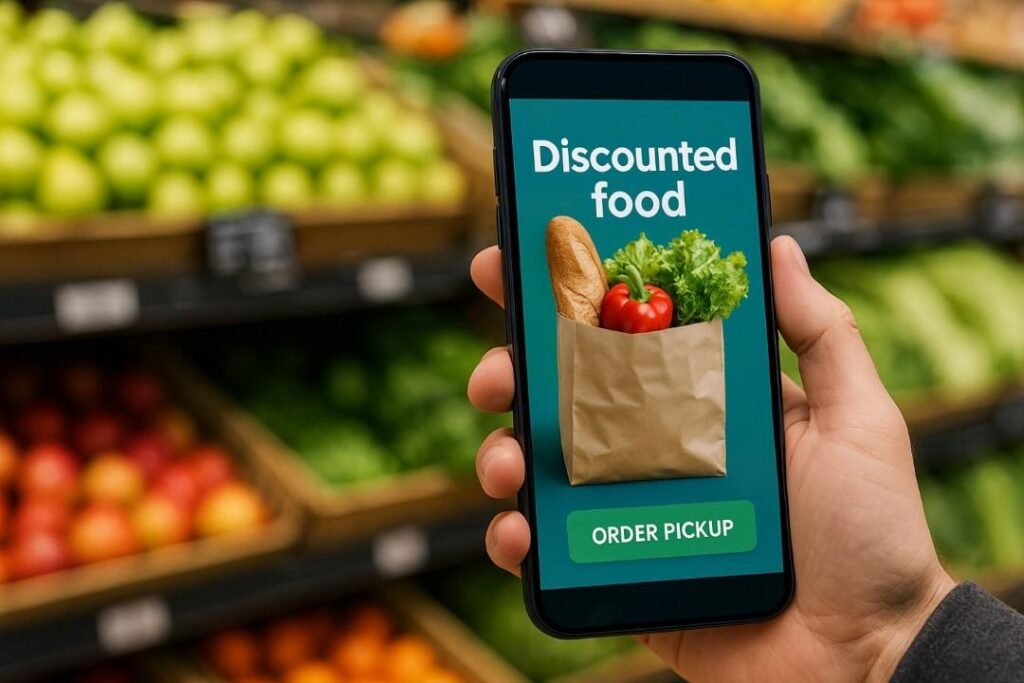
Flash sale and food rescue apps—like Too Good To Go—connect shoppers with local stores and restaurants offering deeply discounted food that would otherwise go to waste. These platforms let you snag fresh meals and groceries at a fraction of the cost while fighting food waste. Set alerts for deals near you, and take advantage of last-minute offers for big savings.
13. Invest in Quality Reusable Storage

Investing in durable, reusable storage—like glass containers, silicone bags, and beeswax wraps—keeps food fresh longer and reduces single-use plastic waste. Good storage extends the life of leftovers and produce, ultimately saving you money. Look for stackable containers for space efficiency and ones that are microwave- and freezer-safe. Over time, reusable options are both eco-friendly and more cost-effective than buying disposable plastic bags or wraps. (Check out more)
14. Buy Seasonal and Local Produce
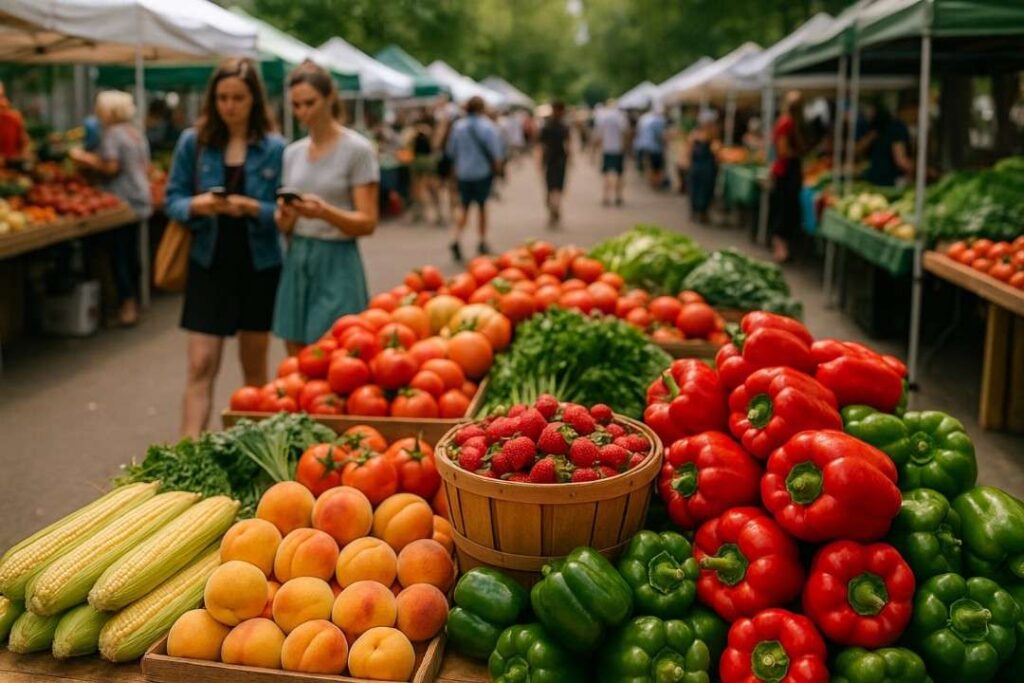
Seasonal and local produce is not only fresher and more flavorful but usually much cheaper than imported options. Plan meals around what’s in season in your area for peak taste and savings. Farmers’ markets often feature deals on surplus items, and buying local supports your community’s growers. The Seasonal Produce helps you plan your shopping and meals based on what’s at its best. (Check Out)
15. Pre-Soak and Cook Beans and Grains in Batches
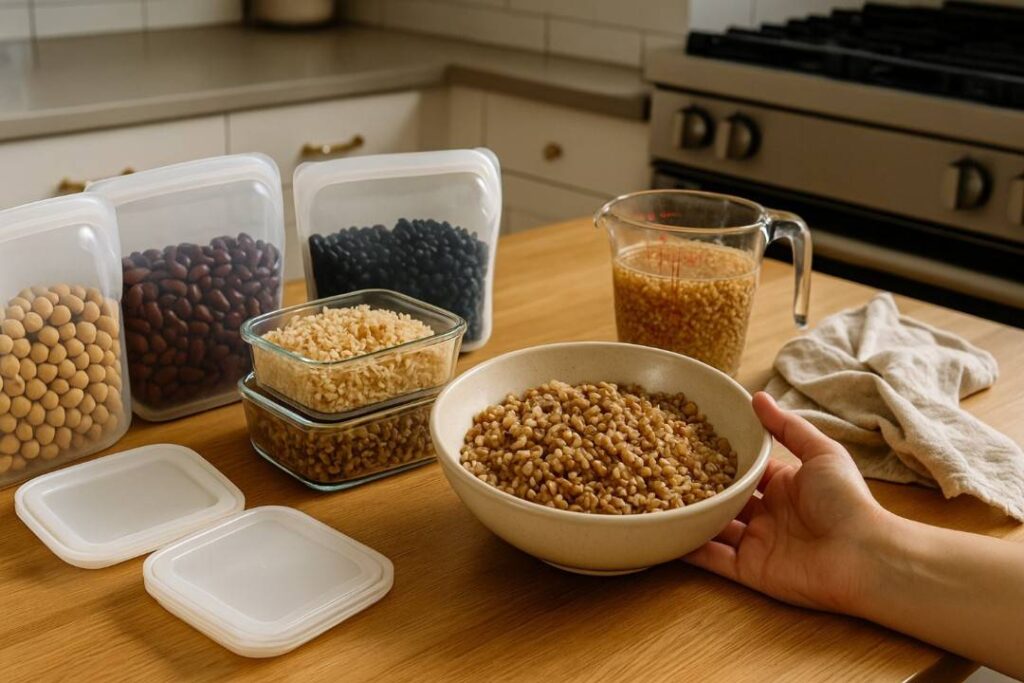
Dried beans, lentils, and whole grains are economical, healthy, and shelf-stable. Pre-soaking and batch-cooking them saves both time and money compared to buying canned varieties. Cook large portions, then freeze in meal-sized portions for easy additions to salads, soups, and stews. This method also lets you control sodium and flavorings. With a little weekend effort, you’ll have healthy, affordable ingredients on hand all week. Read more.
Note: This article is intended for informational purposes only and should not be considered as professional advice. For tailored guidance, please consult a qualified expert.

